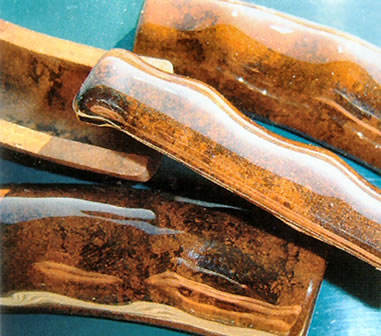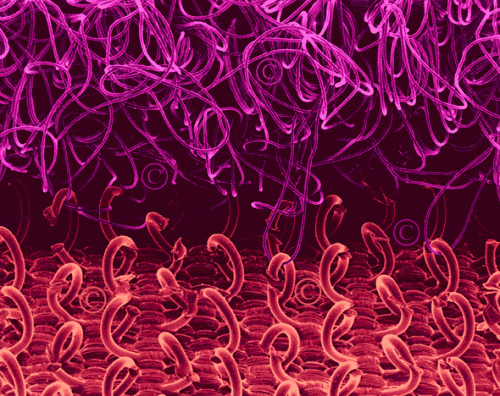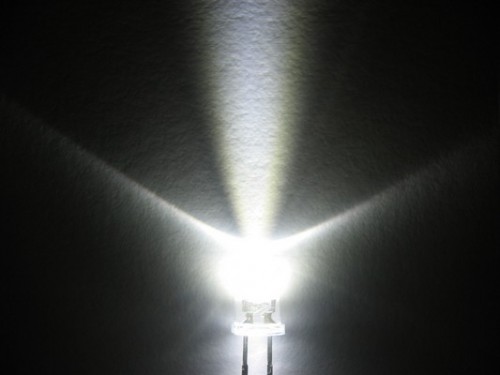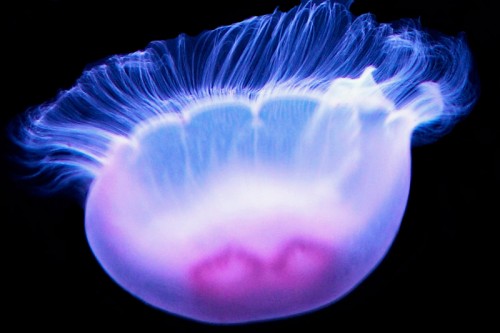10 Awesome Materials from 2010 and Reasons They are Awesome
ARCHITERIALS is a year old now, and like most healthy, well-adjusted one-year-olds it needs to be changed constantly, crawls all over my apartment, and makes strange burbling noises. No, really – it does. It’s terrifying.
Over the past year I’ve profiled approximately 65 materials and learned about blogging, bacteria, and biscuits, although I must confess that the biscuts were a side project. A delicious, buttery side project. Anyhow, to celebrate the birthday of ARCHITERIALS and the fact that the tagline “Investigating architectural materials since 2010” has finally attained temporal legitimacy, I’ve compiled for this, the 10th day of January, a list of 10 materials from 2010 that are generally awesome. I’ve also summarized the awesomeness of each material in a brief paragraph, and I’ve tried to frame each one as part of a larger, sort of big-picture trend in materials science that I’m studying. Should you click on the links and read the detailed posts about each material for more information? Definitely.
Finally, thank you so much to those who’ve submitted information, followed, liked, and posted photos over the past year, I appreciate it more than you can imagine! Keep the materials coming and do tell your friends if your friends seem like people who might be interested in ARCHITERIALS.
Ten Awesome Materials from 2010 and Reasons They are Awesome:

1. Materials that can be deployed in disasters or used to improve living conditions: Concrete Cloth
Concrete cloth is a concrete-impregnated fabric that is fire-proof, waterproof, moldable, drapeable, durable and generally fantastic. Applications include: gabion reinforcement, sandbag defenses, ground surfacing/dust suppression, ditch lining, landing surfaces, formwork, spill containment and landfill lining, waterproofing, building cladding, boat ramps, erosion control, roof repair, water and septic tanks. Concrete cloth solves problems you don’t even know you have, although nothing can repair your terrible relationship with your mother-in-law.

2. Sustainable, non-toxic materials: Reclaimed Wood and Agricultural Fiber Panels
Kirei Board, Kirei Coco Tiles and Kirei Wheatboard made from the non-food portions (stalks and husks) of sorghum, coconut, and wheat plants. The agricultural fiber that’s not sold by farmers for use in the manufacture of Kirei board takes up space in landfills or gets burned up and pollutes the air – therefore repurposing it cuts down on that sort of thing. Sustainable building materials make the planet happy, and a happy planet makes for happy people.
3. Biodegradable materials: Arbofoam
As it turns out, lignin can be transformed into a renewable plastic if it’s combined with resins, flax and other natural fibers. The resulting bio-plastic, called Arboform, can be thermoformed, foamed, or molded via injection machines. It’s durable and super-precise when it’s cast, and it degrades similar to wood into water, humus, and carbon dioxide. It’s very cool stuff indeed and I’d love it if someone would send me information about a project where it’s been used. Biodegradable materials cut down on landfill and reduce environmental pollution.
4. Thermoplastic/thermoelastic/thermoformed/thermo-etcetera materials: Chemical Velcro
How could you not get excited about an adhesive 10 times stickier than Velcro and the reusable gecko-inspired glues that many research groups have been trying to perfect that comes apart when heated??! I have been trying without success to get my hands on some of this to build demountable partition walls for my tiny apartment, and I’m not giving up. Materials that respond to changes in temperature by changing their behavior or attributes will find widespread application in the future.

5. Materials that clean and sanitize themselves: Liquid Glass
Liquid glass a coating that takes advantages of the unique properties of materials at nanoscale. It is environmentally harmless and non-toxic, and easy to clean using only water or a simple wipe with a damp cloth. It repels bacteria, water and dirt, and resists heat, UV light and even acids. According to manufacturers, you can spray liquid glass on everything from wood to seeds to your sneakers. It could someday replace all the toxic cleaning products you currently use to tidy and disinfect, and it reportedly costs about 8 dollars. Materials that clean and sanitize themselves cut down on the need for toxic chemicals and pollutants.
6. Materials that emit light efficiently: White LED Lights
White LED lights emit more light than a typical 20-watt fluorescent bulb, as well as more light for a given amount of power. With these improvements, the new LEDs can replace traditional fluorescent bulbs for all general lighting applications, and also be used for automobile headlights and LCD backlighting. Shedding light on any given subject has never been more efficient. As we transition to alternative forms of energy we are also looking for materials that emit light without using much energy in the first place.
7. Nanomaterials: Gold Nanoparticles
Gold nanoparticles can be used to further increase the efficiency of LED lights. Researchers have implanted the particles in the leaves of aquatic plants, causing the leaves to emit red light. Theoretically, the light produced by the leaves could cause their chloroplasts to conduct photosynthesis, meaning that no additional energy source would be needed to power the process. In fact, the leaves would actually work overtime, absorbing CO2 at night. Nanomaterials allow us to intervene in processes like photosynthesis with a previously unheard-of degree of delicacy.

8. Materials that augment already useful material properties: Bendywood
Bendywood is wood that has been pre-compressed so that it can be easily bent by hand. The tension that forms on the outside of a bend merely returns the plant cells to their former shape, and the wood doesn’t break. The material is delightfully flexible and pliable. Bendywood was developed for indoor uses such as furniture, handrails, or curved mouldings, and it shows enormous promise. Materials like Bendywood amplify the appealing properties of familiar materials so that it’s even easier to use them to our benefit.
9. Bio-based materials: Green Fluorescent Protein (GFP)
At the intersection of biology and solar tech, there are jellyfish that produce green fluorescent protein (GFP). Dripping GFP onto a silicon dioxide substrate between two electrodes causes it to work itself into strands, creating a circuit that absorbs photons and emits electrons in the presence of ultraviolet light. The electron current (aka electricity) can then be used to power your hairdryer. I’m completely fascinated by materials that help us to blur the boundaries between biological and man-made machines.
10. Materials that repair themselves: Bacilla Filla
Bacilla Filla is a material that patches up the cracks in concrete structures, restoring buildings damaged by seismic events or that have deteriorated over time. Custom-designed bacteria burrows deep into the cracks in concrete, where they produce a mix of calcium carbonate and a special bacteria glue that hardens to the same strength of the surrounding concrete. Materials that can detect their own flaws and damage and repair themselves will revolutionize the way we build and think about building materials in the future.





















This site is awesome! I love learning about new materials that one day I might be able to use.
Is there some way I can find out more about them so I can use them in my studies at uni?
Many thanks, Miles.
Hi Miles!
Thanks for visiting – you can find a ton of information about materials by checking out the links posted here on the main site (sidebar and inside each post). I also recommend that you follow ARCHITERIALS on Twitter for additional links and updates.
Inventables.com is a great source for ordering small samples of cutting edge materials if you are looking to experiment!
Cheers,
Alli
Wow, I never knew so many materials were out there that I have never heard of before. Cool site and very informative infomation.
Thanks – I hope you will check back here for the latest and greatest materials!
Fabulous. Thanks for this 🙂
Leave a Wordpress Comment:
Ads
Watch ARCHITERIALS Videos on vimeo
Like on Facebook
Twitter
Flickr
Hit Counter
Ads
Blogs
Green
Journals/Publications
Materials
Network/News
Offices/People
Resources
Science
Pages
Archive
RSS and Email Subscriptions
Tag Cloud
3D 3D printer AB FAB academic acid acrylic actuated matter adaptive adhesive adsorption aerogel air air conditioning alloy aluminum amnh antibacterial antifungal ants april fool's architecture architecture robot artificial skin autonomous aviation awesome bacteria bamboo bananas beer bench bend bending biennale biocomputing biodegradable biodegradeable biomaterials biomimetics biomimicry biominerals biopolymer birds blast blast-resistant block blocks blogs Bloom Box brazil brick bubbles bucky bulk metallic glass butterfly calera canvas carbon carbon fiber carbon nanotubes carpet cars ceiling cellulose cement ceramic chain link chair charcoal charlie sheen chemicals chiller clay cloth cloud cmu coils color color-changing communication compound computer concrete condensation conducting conductive context cool coral cracks crystal cyborg demakersvan design digifab dirt disaster dna dror drywall dutch dynamic EAP earth ecocradle ecolect e coli ecology ecoresin ecovative elastic electric electricity electrochromic electroluminescent electronic energy energy recovery environment evaporative cooling experiment fabric fabrication facade fiber fiberglass fiber optic fiber optics fibers film FIRE flexible flickr fly ash foam fungus furniture garbage gel geodesic dome geometry gfrp gilgamesh glass glass fiber glow glue gold graphene green greensulate gsapp gypsum hard heat heavy heidi klum helix hemp hexagon hidden high performance hive honeybee humidity ice India ink insulation interference Internet inventables invisible invisible ink jello jellyfish just add water kevlar kinetic korea lace lamboo laser lattice leaves LED leed LEGO light light emitting light transmitting liquid lo mein london Loop.pH machines magic magnetic marine material materials meatball melting memory metabolic engineering METAL metal panel metamaterial micro microsensor microtools military milk MIT moisture multi-layer mushrooms mycelium nano nanogel nanotech nanotubes NASA new noise non-metallic oil OLED OMA ostrich oysters packaging paint panel panels paper paperfoam paraffin wax particles particulates petroleum phase change phosphorescent pink PLA plastic platinum pm-10 poetry pollution polymer polymers porcelain power precast printed printing protein public quadror radiant rain rammed earth reclaimed recycled reflective refracting Rem Koolhaas resin robot robotics roof rubber rugged sand sealant sealer search segmented self-healing sensor shape memory silica silicon silk skin skittles slats smog soft solar solar cell solar cells solar paint solid solid state lighting sound spider spider glue spray stabilized sand stone stretch stretchable strong structural structure studio dror sun sunglasses super supercritical sustainable switzerland tags tape technology TED tensile TEXAS textile textiles texture thermal thermochromatic thin thin film thread tiger stone tile tiles timber tio2 tires toaster tokujin yoshioka touch touch-sensitive toxic transparent t shirts tulip ultra-thin university of akron university of connecticut upcycling virus voc wall wallpaper WATER web wet whale wires WOOD woodwool wool workshop
WP Cumulus Flash tag cloud by Roy Tanck and Luke Morton requires Flash Player 9 or better.
Recent Comments
Ads
Recent Posts
Most Commented
Most Viewed